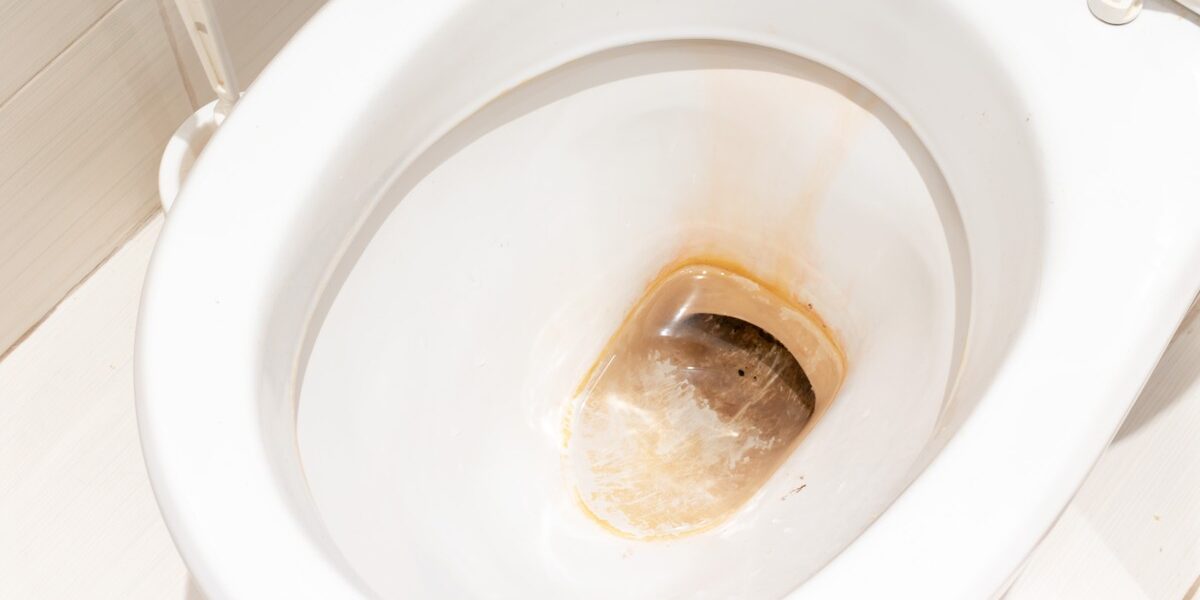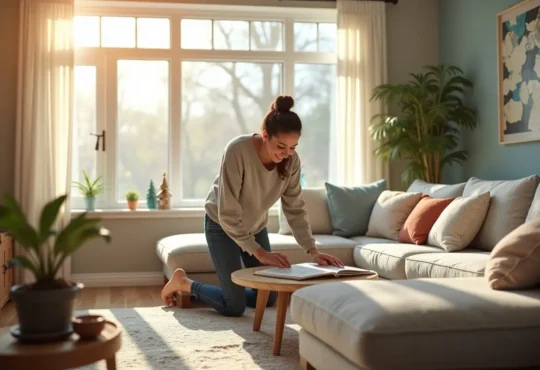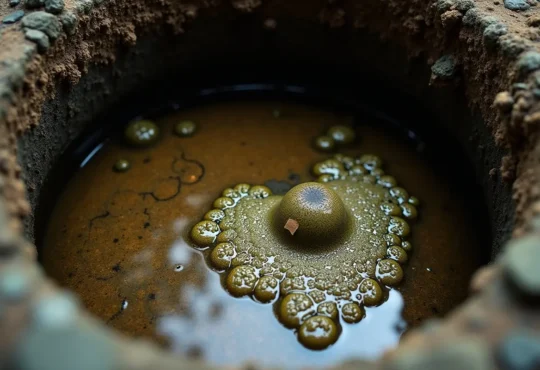
How to Clean Toilet Stains
Cleaning toilet stains can be disheartening when stubborn spots mar the pristine surface of your bowl. Whether it’s the brown hue from mineral deposits or black mold specks, these stains are a persistent nuisance. But don’t worry, we’ll soon reveal the secrets to restoring your toilet to its former glory
Contents
- 1 Unraveling the Causes of Toilet Stains
- 2 Natural Cleaning Arsenal: Eco-Friendly Solutions for Toilet Stain Removal
- 3 Commercial Cleaning Solutions: When Nature Needs a Helping Hand
- 4 Preventative Measures: Keeping Toilet Stains at Bay
- 5 Embracing Professional Assistance: When to Call in the Experts
- 6 Frequently Asked Questions (FAQ)
Unraveling the Causes of Toilet Stains
Before we delve into the cleaning methods, it’s essential to understand the root causes of these unsightly stains. By identifying the culprit, you can better tailor your approach and prevent future occurrences.
Hard Water and Mineral Deposits
One of the most common sources of toilet stains is hard water, which is water with a high concentration of minerals such as calcium and magnesium. As the water flows through your toilet, these minerals can accumulate on the surface, leaving behind chalky white or brownish stains.
While these stains may seem harmless, they can be a breeding ground for bacteria and can ultimately lead to more severe issues if left unchecked.
Rust and Copper Buildup
Another culprit behind those unsightly stains is rust and copper buildup. If you notice reddish-brown or greenish-yellow stains, it could be a sign of corroded pipes or copper contamination in your water supply.
These stains not only mar the appearance of your toilet but can also be corrosive, potentially causing damage to the porcelain over time.
Mold and Mildew Growth
In humid environments or areas with poor ventilation, mold and mildew can thrive, leaving behind dark green, black, or even pink stains in your toilet bowl. These stains can be particularly stubborn and may require more aggressive cleaning methods to eradicate. If you’re dealing with persistent mold issues, it might be worth considering professional services like mold testing in Naperville, IL, or a local company to identify and address potential sources of mold growth in your home.
Sediment and Mineral Buildup
Sometimes, the stains in your toilet bowl can be caused by sediment or mineral buildup from the water supply itself. This can lead to brown or reddish rings or deposits at the bottom of the bowl, making it look unsightly and unhygienic.
Natural Cleaning Arsenal: Eco-Friendly Solutions for Toilet Stain Removal
While commercial cleaners can be effective, many homeowners prefer to opt for more eco-friendly and natural solutions. Fortunately, there are several readily available household items that can work wonders in removing toilet stains.
Dynamic Duo: Vinegar and Baking Soda
The combination of vinegar and baking soda is a powerful one-two punch against toilet stains. Vinegar’s acidic nature helps dissolve mineral deposits, while baking soda acts as a gentle abrasive, loosening stubborn stains.
To harness the power of this dynamic duo, follow these steps:
- Sprinkle a generous amount of baking soda around the toilet bowl.
- Slowly pour in undiluted white vinegar, allowing the mixture to fizz and react.
- Let the solution sit for 10-15 minutes, giving it time to work its magic.
- Scrub the bowl vigorously with a toilet brush, focusing on the stained areas.
- Flush the toilet to rinse away the mixture and any loosened stains.
Lemon Juice: Nature’s Stain-Fighting Powerhouse
Lemon juice is another natural cleaning agent that can effectively tackle toilet stains. Its citric acid content makes it an excellent choice for breaking down mineral deposits and whitening porcelain surfaces.
To use lemon juice for toilet stain removal, follow these steps:
- Combine equal parts lemon juice and water in a spray bottle.
- Generously spray the solution onto the stained areas of the toilet bowl.
- Allow the solution to sit for at least 30 minutes, giving it time to penetrate the stains.
- Scrub the bowl with a toilet brush, focusing on the stained areas.
- Flush the toilet to rinse away the solution and any loosened stains.
Hydrogen Peroxide: A Powerful Bleaching Agent
Hydrogen peroxide is a versatile cleaning agent that can be used to remove a variety of stains, including those found in toilet bowls. Its bleaching properties make it an effective solution for tackling tough mineral deposits and mold stains.
To use hydrogen peroxide for toilet stain removal, follow these steps:
- Pour undiluted hydrogen peroxide into the toilet bowl, ensuring it covers the stained areas.
- Let the solution sit for at least 30 minutes, allowing it to work its magic.
- Scrub the bowl vigorously with a toilet brush, focusing on the stained areas.
- If stubborn stains remain, sprinkle a small amount of baking soda onto the affected areas and continue scrubbing.
- Flush the toilet to rinse away the solution and any loosened stains.
Pumice Stone: A Gentle Abrasive for Stubborn Stains
For those stubborn stains that seem to resist even the most potent natural cleaners, a pumice stone can be a valuable ally. This gentle abrasive can help lift and remove deeply embedded stains without damaging the porcelain surface.
To use a pumice stone for toilet stain removal, follow these steps:
- Thoroughly wet the pumice stone and the toilet bowl to prevent scratching.
- Gently scrub the stained areas with the pumice stone, applying moderate pressure.
- Rinse the bowl periodically to remove any loosened debris.
- Repeat the process until the stains have been effectively removed.
- Flush the toilet to rinse away any remaining residue.
Commercial Cleaning Solutions: When Nature Needs a Helping Hand
While natural cleaning solutions are often preferred, there may be instances where commercial cleaners are necessary to tackle particularly stubborn or severe stains. In such cases, it’s essential to choose the right product for the job and follow the manufacturer’s instructions carefully.
Muriatic Acid and CLR: Heavy-Duty Stain Removers
For tough mineral deposits and limescale buildup, muriatic acid and CLR (Calcium, Lime, and Rust Remover) can be highly effective. These powerful cleaners use strong acids to dissolve and break down mineral stains.
However, it’s crucial to exercise caution when using these products, as they can be corrosive and potentially harmful if not used properly. Always wear protective gear, ensure proper ventilation, and follow the manufacturer’s instructions to the letter.
Bleach: A Powerful Disinfectant and Whitener
Bleach is a potent disinfectant and whitening agent that can be effective in removing mold and mildew stains from toilet bowls. However, it’s essential to use bleach with caution, as it can be harsh on surfaces and potentially harmful if not handled properly.
When using bleach for toilet stain removal, always dilute it according to the manufacturer’s instructions, and ensure proper ventilation. Additionally, avoid mixing bleach with other cleaning products, as this can create toxic fumes.
Preventative Measures: Keeping Toilet Stains at Bay
While cleaning toilet stains is essential, preventing their formation in the first place can save you time and effort in the long run. Here are some preventative measures you can take to keep your toilet bowl looking pristine:
Regular Cleaning and Maintenance
One of the most effective ways to prevent toilet stains is to maintain a regular cleaning routine. Frequent cleaning can prevent the buildup of minerals, mold, and other stain-causing agents, making it easier to maintain a spotless toilet bowl.
Water Softeners and Filters
If you live in an area with hard water, installing a water softener or filter can help reduce the mineral content in your water supply. This, in turn, can minimize the formation of mineral deposits and stains in your toilet bowl.
Proper Ventilation
Ensuring proper ventilation in your bathroom can help prevent the growth of mold and mildew, which can lead to unsightly stains. Consider installing an exhaust fan or opening windows during and after showers to promote air circulation.
Toilet Bowl Cleaners and Treatments
Using toilet bowl cleaners and treatments designed to prevent stains and buildup can be an effective preventative measure. Look for products that contain acid-based cleaners or enzymes that help break down mineral deposits and organic matter.
Embracing Professional Assistance: When to Call in the Experts
While many toilet stains can be tackled with DIY methods, there may be instances where professional assistance is required. If you’ve tried various cleaning methods without success or if the stains are accompanied by more severe issues, such as leaks or damage to the toilet itself, it’s advisable to seek the help of a professional plumber.
Professional plumbers have access to specialized tools and techniques that can effectively address even the most stubborn stains and underlying issues. They can also provide valuable advice on preventative measures and maintenance routines to keep your toilet in pristine condition.
Frequently Asked Questions (FAQ)
How do you clean a badly stained toilet?
To clean a badly stained toilet, use natural cleaners like vinegar, baking soda, and lemon juice first. If they fail, try commercial cleaners such as muriatic acid or CLR, following instructions. For severe stains, consider professional help.
How do I get rid of brown stains in my toilet?
Brown stains in toilets are often caused by mineral deposits or rust buildup. To remove them, try using a paste made from vinegar and baking soda, letting it sit for a while before scrubbing. Alternatively, you can use lemon juice or hydrogen peroxide, which can help break down mineral deposits and rust stains.
How do I get rid of brown limescale in my toilet?
To tackle brown limescale stains in toilets, mix vinegar or citric acid with hot water and pour it into the bowl. Let it sit for several hours or overnight. Scrub thoroughly the next day to remove or reduce the stains.
How to get brown rings out of a toilet?
To remove brown rings in toilets, try using a pumice stone or a toilet brush with a bit of abrasive cleaner. Alternatively, you can create a paste with baking soda and vinegar, apply it to the ring, let it sit for a while, and then scrub vigorously.
How do I get rid of brown sediment in my toilet?
Start with turning off the water supply, flushing to drain the water, and scrubbing with a toilet brush and a mixture of vinegar and baking soda or a commercial cleaner. Repeat as needed for stubborn sediment.





 Hi I'm Joe.
Hi I'm Joe. 